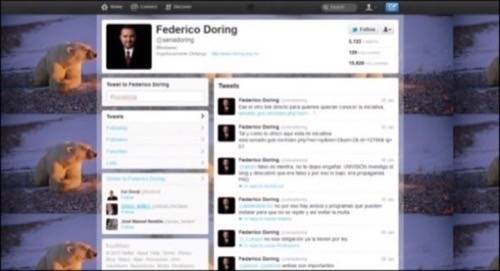In 1959 (as I recall), my mother, an acclaimed professional artist, had entered a handful of her oil paintings into an annual art show. Someone attending the show noted that one particular work, the face of a peasant boy, strongly resembled a photograph that had appeared in Life magazine. Well, there was no coincidence about it: Mom had studied precisely that face, and her work was based on that photograph. (The card tacked to the wall actually said so, if anyone had bothered to read it.)

So it was that the local newspaper “exposed” my mother as a fraud, a counterfeiter. It ran a story with the painting next to the Life magazine photograph itself. Thus began a lifelong dialog that became one of the threads of my life: a case study in fair use that fueled endless debates in the Socratic method between Mom and her art students for the next four decades. It began with the delicious irony of the newspaper having reprinted the Life photograph without Time-Life’s permission, and embraced the lovely fact Mom eventually sold the painting for many times the original price.
Granted, I think of Mom at least as much today as when she was alive. But I thought of those long, late-night debates about the extent of fair use yesterday upon coming across the curious case of one Federico Döring Casar. If you follow the news in Mexico, you know Senator Döring is the fellow who proposed legislation that would create a new “notification system” for Internet users suspected of trafficking in pirated content. It would act as a warning that they’re liable to have their wages garnished for up to ten years, depending on the extent of the offense; and it would most likely directly involve ISPs who would provide a new government authority with the identities of potential suspects.
Whose polar bear is this?

Döring is not one of these Luddites afraid of any typewriter that has a TV screen attached; he’s relatively active with social media, including regular posts to Twitter (@senadoring). It’s there where one of his readers, a lady named Ophelia Pastrana (@mpastrana), whose profile describes her as “anti-print,” noticed something familiar about Döring’s background wallpaper. It’s a beautiful shot of a polar bear stretched out on a rocky, snowy terrain enjoying the sunset, with a face not unlike the Senator’s own. It’s something my mother would likely have considered painting sometime. But indeed, it would appear to be a screen grab directly from the Mangelsen stock photo agency, whose Web page clearly licenses the photo for royalties.
And so it was that Sen. Döring was called out as a fraud, a counterfeiter. Never mind for a moment the delicious irony that the act of demonstrating Döring’s most grievous fault effectively copies the exact same photograph. Supposedly such demonstrations in the act of journalism constitute “fair use.”
In other words, it’s all right for a journalist to do it, but not for a senator. Evidently fairness may differ depending on whom you’re being fair to.
Who needs one big brother when a billion little ones will do?
This is the very type of topic my mother relished. In her ingenious, professorial style, which often resembled Justice John Marshall as rendered by Buffy Sainte-Marie, she’d compel her students to adopt one position (“Every photograph qualifies as art, so copying it without permission is forgery”) and then throw a live grenade at them that challenged their newfound position. At such a moment, like Perry Mason closing an argument, she’d extract from behind a cabinet some hidden photo of a painting by Andy Warhol (whom she loathed, by the way), one produced by way of the manipulation of copyrighted photos, and watch her students backtrack (“Oh, that’s different, Andy Warhol’s famous”).
Sen. Döring has suggested that the act of policing each other, of ensuring that we don’t step on each other’s intellectual property rights, can be crowdsourced. Since the Internet is essentially a cooperative, a kind of digital society, then infringement is something we can all make efforts to help each other avoid. Never mind for a moment the eerie resemblance to Chinese families helping each other to refrain from bearing siblings. The suggestion Döring makes is that we all know infringement when we see it.
Do we? A Spain-based blog post (English-language Google translation here) called Döring out for being two-faced, for having the gall to promote a system of registering intellectual property violations, and for having spoken out against the SOPA bill in the U.S., while at the same time using a copyrighted polar bear as his wallpaper. Evidently the mark of a career politician.
In an adjacent paragraph, the blogger suggests that a polar bear belongs to everyone. Exactly what right did the photographer have to claim the bear’s repose as his own? Shouldn’t the bear have a say in this? And elsewhere, the same post states (translating from Spanish), “copying is the most common process in the digital environment,” something which folks do every day, perhaps inadvertently. Or put another way, it’s fair for a blogger to do it, and maybe for a bear, but not a senator.
Theft Is Theft (void where prohibited)
At one level, the SOPA debate brought thousands, and perhaps millions, of people together to collectively agree on something, perhaps “Censorship Bad,” perhaps something greater. But the true problem we face as a people and as a society, as we continue to take what truly are the first steps in the age of digital communication, is that we don’t know what we’re talking about. It’s impossible to legislate a principle that we have not yet defined in the public mind. To a member of the MPAA, it may seem clear-cut enough: You steal a movie, that’s piracy. But a principle is deeper than a campaign slogan; it’s something definitive that applies to the future as much as to the present.
“Fair use” is a concept we believe to be well-defined in U.S. law. There are reasons we need to copy things, for example, in research, in journalism, in exercising our own freedom of expression by borrowing an idea, in art. Fair use would say it’s okay to slap a picture of a polar bear on your notebook. It would be wrong to broadcast that picture without proper attribution to the photographer.
But Twitter turns that distinction entirely upside down. Every little thing you do is a broadcast; every polar bear you slap on your cover is a little act of infringement. While it seems altruistic enough that we should help each other to not step on one another’s toes, where do we stop? Most of the tweets that will be generated as a result of this article are copies of each other. The Internet is, by its very nature, a giant replication factory. While it may have been easy for each of us to take a side for or against SOPA, Viacom CEO Phillipe Dauman was right in telling AllThingsD’s Peter Kafka yesterday that the polarization created through the debate may be blinding us to the underlying issue of what kind of copying is fair and what kind wrong.
Here, you can read about what Dauman told Kafka on stage in this blog post. It’s been conveniently copied, in its entirety, without permission, from something first published by Mashable.
Scott M. Fulton, III is the author of this document and is fully responsible for his content. If you copy it without permission, you deserve to have the minimum wage deducted from your earnings. Unless you’re a blogger, in which case, you might not be making that much from your blog anyway.










